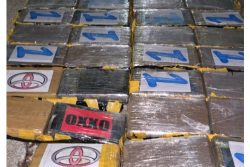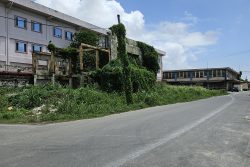Last Friday, just eight days after the World Anti-Doping Agency (WADA) voted to reinstate the Russian Anti-Doping Agency (RUSADA), the Canadian newspaper, The Toronto Star, broke a story that the most famous doping incident in Olympic history, the Ben Johnson scandal, appears to have been constructed around a series of questionable laboratory procedures.
At 1:30 pm, on 24th September, 1988, the highly anticipated Men’s 100 metres final took place at the Seoul Olympics, the world record holder, Canadian Ben Johnson leapt from the starting blocks and blazed down the track in the electrifying time of 9.79 seconds, shattering his previous mark of 9.83 seconds, set a year earlier at the IAAF World Championships in Rome.
The sporting world gasped in disbelief as Johnson raised his arm and pointed his index finger to the sky. The best sprinters in the world trailing in his wake, a full two strides behind, were equally amazed at how Johnson had left them scrambling for silver and bronze.
Three days later, Johnson, who had no recourse to appeal, unlike athletes of today, was stripped of his medal and world record, as the International Olympic Committee (IOC) announced that he had tested positive for the banned anabolic steroid, stanozolol. The gold medal was awarded to the American, Carl Lewis, who thus became the first man to retain the 100 metres title. Britain’s Linford Christie gained the silver and the original fourth place finisher, Calvin Smith collected the bronze medal.
The Canadian Government then ordered “The Commission of Inquiry Into the Use of Drugs and Banned Practices Intended to Increase Athletic Performance.” Presided over by Ontario Appeal Court Chief Justice Charles Dubin, the landmark commission became known as the Dubin Inquiry, and at the time, was one of only two (East Germany was the other) such examinations ever held into a country’s usage of performance enhancing drugs (PEDs).
The Dubin Inquiry, which cost $4 million, lasted over eight months and produced over 14,000 pages of testimony and shocking information into the rampant use of PEDs by athletes. Among the 119 witnesses were Johnson and his coach, Charlie Francis, a former sprinter himself, whose scientific knowledge of the intricate world of PEDs and doping cycles, had earned him the nickname of “Charlie the Chemist.” Francis, who, in 1971, was ranked as high as fifth in the world among 100 metres sprinters, accepted the fact that the world of sprinting was dominated by steroid usage and duly gave his charges the option of doing likewise. Dr Jamie Astaphan, who administered the PEDs to Francis’ stable of world class sprinters, also provided testimony.
The abuse of drugs in sport led to Dubin criticising the testing policies of the federal government and amateur sports associations in his report which was presented in June 1990. Subsequently, in April 1991, Canada established the Canadian Anti-Doping Organisation, an independent non-profit organisation, responsible for drug testing, policy and implementation.
Johnson admitted to Dubin that he had started using drugs in 1981, and as evidenced by his constant improvement ever since, the PEDs had worked very well for him. Johnson, who was subsequently banned for two years, made a comeback, but was obviously not the same sprinter without the PEDs, and failed to make an impact at the 1992 Barcelona Olympics. In 1993, he tested positive again, at a meeting in France, and received a lifetime ban.
With the passage of time, the 1988 Seoul Olympic 100 metres final has become labelled as the “Dirtiest Race of All Time,” as five of the other seven finalists, also tested positive at some stage in their careers, of course, they all provided plausible explanations. Lewis, Johnson’s arch rival, had failed three drug tests at the 1988 USA Olympic Trials, for minimum amounts of pseudoephedrine, ephedrine and phenylpropanolamine – banned stimulants and bronchodilators – also found in cold medication. The USA Olympic Committee had accepted Lewis’ explanation that it was from an over the counter remedy he had innocently taken. According to the rules of the day, Lewis, winner of nine Olympic gold medals should not have even been at Seoul.
Thirty years later, an ostracized Johnson is still on the outside looking in at the world of Track and Field, having been the most famous athlete, the star attraction of the Olympic Games, to have been caught cheating with PEDs. Perhaps, that may change in the coming months.
The Toronto Star reporter, Mary Ormsby, who was in Seoul and covered the Dubin Inquiry, has kept in touch with Johnson over the years and one day enquired if she could have a look at the drug test. Johnson, to her complete amazement replied that he didn’t have a copy or knew of anyone who had one. Ormsby, through the Freedom of Information Act, was able to secure a copy from an Ottawa Library, which stores the exhibits from the Dubin Inquiry.
The thirty-year-old lab report of the Johnson drug test in Seoul holds the clinical data, dates, times, sample codes and the scientific test results, and covers 31 pages. While experts, testifying at the royal commission, confirmed the presence of stanozolol in the report, there is a growing list of questions of the IOC lab’s handling of Johnson’s urine sample.
According to Ormsby’s report, “The Seoul paperwork is peppered with unsigned handwritten revisions, unexplained deletions, question marks, “blank” urine tests, changed lab codes and most notably, apparent confusion at the time about what steroid was actually in Johnson’s system.
“The IOC’s powerful medical commission, which oversaw its accredited doping control centre testing in Seoul, withheld the lab report from the Canadians in 1988 — effectively preventing the commission’s work from being challenged — after Canada’s chief medical officer, Dr William Stanish, requested the information.”
Johnson, has always maintained that his drink in the testing room had been spiked by a friend of Lewis who had mysteriously appeared in the testing room, which was against protocol. The test revealed that Johnson had 80 nanograms of stanozolol in him, an enormous amount of a training drug, virtually of no use on race day. The test result also stated that Johnson had oxandrolone in his system, a drug he had never heard of. Charlie the Chemist, with his scientific knowledge of tests results, like the rest of the Canadian contingent had not been privy to the paperwork at Seoul and would probably have picked up the inconsistencies of the lab work.
Dick Pound, a Canadian lawyer, who would later head WADA, then an IOC vice-president attempted to defend Johnson, although he hadn’t seen the report, but was deterred when he was unofficially briefed by a member of the IOC Medical Commission that they had run an unauthorised and unverified endocrine profile test which had confirmed that Johnson was a long time steroid user. It should be noted that it was not part of the battery of tests at the time.
At the 1984 Olympics in Los Angeles the findings of nine positive drug tests during the last two days of the track and field events were destroyed, and nothing was heard of that incident again. That event which came to light in August 1994, coupled with this recent discovery of the questionable Johnson drug test results and the return of RUSADA to the fold can only leave sport fans wondering as to who they can really trust in this steroid circus which they now find themselves watching.
The athletes never admit that they are cheating, it’s always a mistake, they were taking cough medicine or their sample was compromised. There are a series of appeals, their lawyers find some technical loophole and the case is dismissed and they are back on the circuit.
Now, it’s beginning to appear that the authorities who should be protecting the integrity of the sports have their own hidden agendas. The fates of the athletes are in the hands of the powers that be, whilst the fans, sitting in the stands or watching on television, are left to contemplate if what they are seeing is real.
Thirty years later, it appears that nothing has changed.








